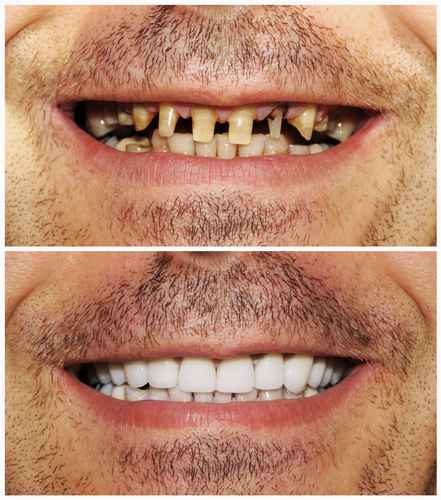When you discover that undesirable hole in your tooth, whether visible or not, you know it is your mouth’s way of telling you that you have a functioning case of a cavity, caused by the action of bacteria. Among the 300 kinds of bacteria residing in your mouth, many provide worthwhile services like producing vitamins and digesting food. However, other bacteria mix with sugar and saliva to make up a powerful grouping that may lead to tooth deterioration and decay. Immediately after consuming sugar, and even within minutes of cleaning teeth, sticky glycoproteins, blends of carbohydrates and protein molecules, cling to the teeth to begin the development of “plaque”. First thing in the morning, the plaque may temporarily uncover itself as a slick, pale film on your teeth, even though it is typically invisible. This is because your natural mouthwash, from the glands that produce saliva, are turned off while you sleep.
If you wish to save yourself from many time-consuming dental problems in the future, then you should spend a while with your dentist twice a year for an examination. During the checkup, your dentist or hygienist will examine your mouth for cavities and infection. Your continued oral health is dependent on these regular exams, as your dentist may also take modern X-ray scans every few years, as well as investigating about health problems you might have, and medicines you take, that might affect your oral health.
You can protect your molars from bacteria by simply spending an hour at your dentist’s office. Plastic sealants have been proven to effectively prevent plaque establishment in pits and fissures, and to cut tooth decay in half. This process is short and easy; a special gel is deposited on the eating surface for a few seconds, then washed off. Once dried, a plastic sealant is painted on the tooth. A light may be shone on the tooth to help harden the sealant. It takes only a minute or so for the sealant to form a protective shield. A single application of sealant can last up to several years.
Another effective method to avoid cavities is through fluoride treatment. Because it helps keep the enamel of your teeth tougher and safeguarded from cavities, fluoride is a vital mineral for your teeth. Early fluoride remedies will help restore the condition of your enamel, in the very earliest stages of cavity formation. Fluoride also helps in restoring damage done to your teeth. Some types of fluoride gels, foams or liquid solutions are more potent than those in over-the-counter toothpastes and mouthwashes, so you should consult your dentist for recommendations.
The dentist can patch up a segment of your tooth that is moderately decayed, with some filling materials that will restore the original shape of your tooth. By drilling off the damaged part, the dentist will then replace that part with fillings made up of composite resins or porcelain, that is the same color as your tooth. You will rediscover your almost brand-new tooth after completion of the filling process. So don’t hesitate to ask your dentist for some renovations on the decayed portions of your teeth.


Leave A Comment